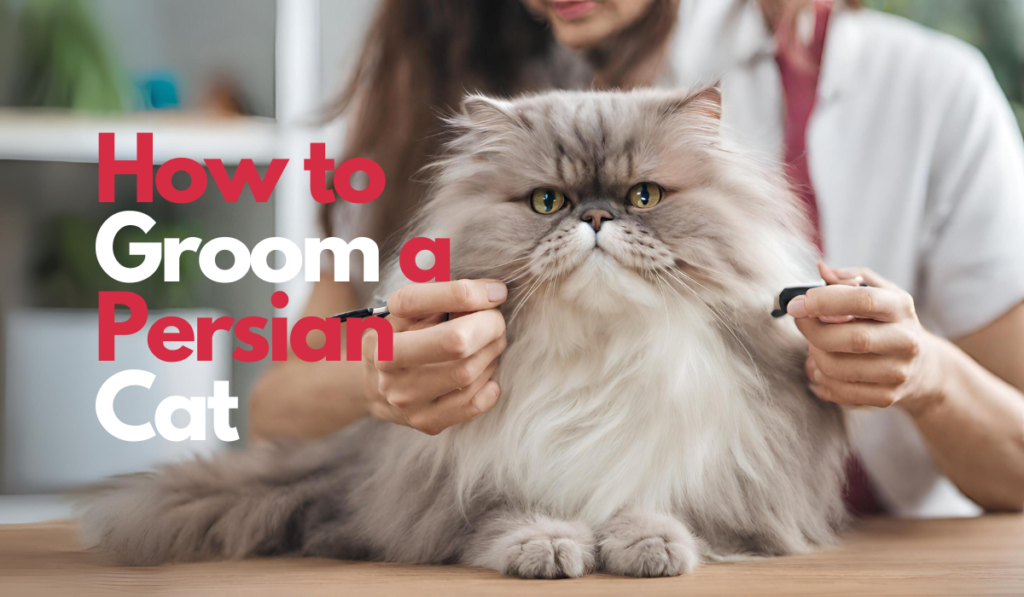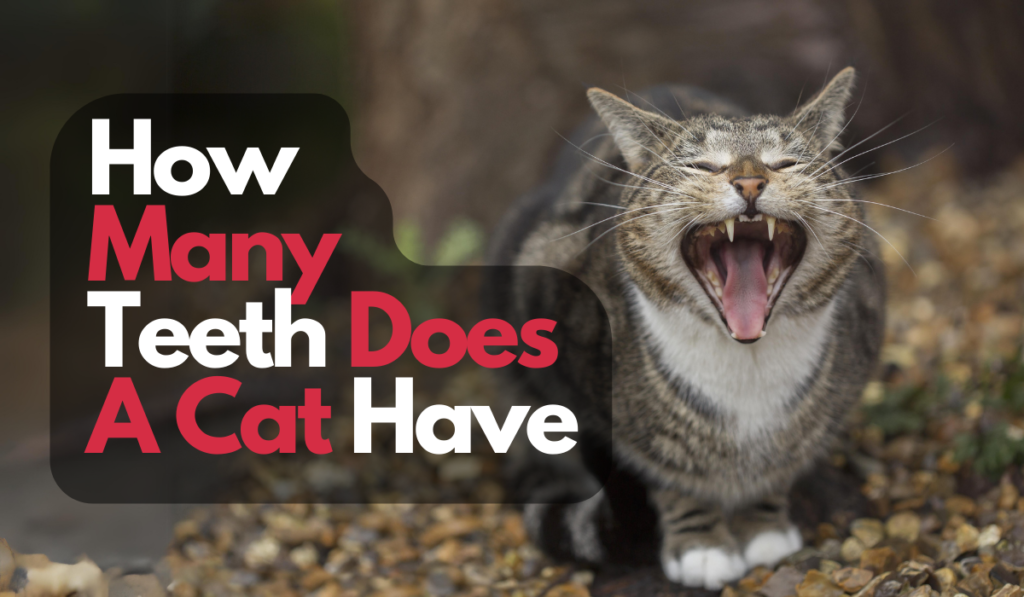Persian cats are known for their long, luxurious fur, but this beautiful coat requires regular grooming to keep it healthy and mat-free. Regularly grooming your Persian cat can help prevent mats, tangles, and shedding and keep your cat’s skin and coat clean and healthy.
This guide will walk you through the steps of how to groom a Persian cat, including:
- Brushing and combing
- Bathing
- Trimming nails
- Cleaning ears and eyes
Moreover, we shall give you helpful information on how grooming can be fun for you or the rest of your pets.
Every cat owner needs to groom them. To ensure that your cat stays in perfect form, it is advisable to follow the steps highlighted in this instruction.
Understanding the Unique Grooming Needs of Persian Cats
There is not a single cat that would match the Persian cats in popularity. They are stunning animals with long coats having pleasant characters and specific looks However, owning a Persian cat also has special responsibilities, especially grooming.
Persian cats are easily noticed for their long, sleek coats covering their paws and hind limbs. You should regularly brush and comb this fur to eliminate mats and tangles that may cause discomfort and skin problems for a cat.
You should brush your Persian cat at least once daily, using a wide-toothed comb or a slicker brush. Start from the head and work down to the tail, gently removing any knots or loose hair. Pay special attention to the areas under the chin, behind the ears, under the arms, and around the genitals, where mats are more likely to form.
Another important aspect of grooming your Persian cat is cleaning their eyes and ears. Persian cats have flat face and a short nose, which can cause tear staining and eye discharge. To prevent this, you should wipe their eyes with a damp cotton ball or a soft cloth every day, using a gentle eye cleaner or warm water. You should also check their ears regularly for any signs of dirt, wax, or infection and clean them with a cotton swab or a special ear cleaner if needed.
Finally, you should trim and bathe your Persian cat’s nails occasionally. Trimming your cat’s nails will prevent them from scratching themselves or your furniture and reduce the risk of ingrown nails. You should use a cat nail clipper or a scissor-type clipper and cut only the tip of the nail, avoiding the pink part where the blood vessels are.
Depending on how dirty they get, you should also bathe your Persian cat once every few weeks or months. Use a mild shampoo designed for cats, and rinse well with warm water. Dry your cat thoroughly with a towel or a hair dryer on low heat, and comb their fur to remove any tangles.
Following these grooming tips will ensure your Persian cat stays clean, healthy, and beautiful. Remember that grooming suits your cat’s physical well-being and emotional bond with you. Your Persian cat will appreciate your care and attention and will reward you with their love and affection.
The Importance of Regular Brushing for Persian Cats

Regular brushing is an essential part of grooming for Persian cats. While beautiful, their long, luxurious double coat is prone to tangling and matting. Without daily brushing, these mats can become tight and uncomfortable, leading to skin irritation and discomfort for your feline friend.
Brushing serves multiple purposes. Firstly, it helps to remove loose hairs from the coat. Persian cats shed their undercoat seasonally, and these loose hairs can form mats without regular brushing. Secondly, brushing helps to distribute natural oils from the skin throughout the coat. These oils keep the fur soft and shiny and protect against environmental elements.
Moreover, regular brushing can help reduce hairballs. Persian cats groom themselves by licking their fur, which can lead to the ingestion of loose hairs. These hairs can form hairballs in the cat’s digestive system, which are uncomfortable and can lead to serious health issues.
Additionally, brushing allows you to check your cat’s skin for abnormalities such as lumps, bumps, or parasites. It’s also a great way to bond with your cat. Many cats enjoy being brushed and associate this activity with positive attention.
Step-by-Step Guide to Bathing Your Persian Cat
Bathing is an integral part of grooming for Persian cats. Their long, dense fur can trap dirt and oils, leading to mats and skin issues. Here’s a step-by-step guide to bathing your Persian cat:
Step 1: Preparation Before you begin, gather all the necessary supplies. This includes a gentle cat shampoo, a large towel, a non-slip mat for the sink or tub, and a pitcher or handheld shower head for rinsing.
Step 2: Brush Your Cat: Before bathing your cat, brush them well. This will remove loose fur and prevent tangles from forming when the fur gets wet.
Step 3: Warm Up the Water: Fill the sink or tub with enough warm water to cover your cat’s legs. The water should be lukewarm, not hot.
Step 4: Gradually Introduce Your Cat to the Water: Softly lower your cat in the water, assuring them gently.
Step 5: Apply Shampoo: Use a small amount of Cat shampoo and work it into a lather on your cat’s fur. Be careful to avoid the face and ears.
Step 6: Rinse Thoroughly: Rinse all the shampoo out of your cat’s fur using the pitcher or handheld shower head. Make sure all the soap is gone to prevent skin irritation.
Step 7: Dry Your Cat: Warmly dry off your cat using a large towel. You should let the cat to be patient. Then if the cat tolerates, you could employ low-heat set-blow drier to expedite the process.
Step 8: Reward your Cat: Reward your cat with treats and cuddles. After the bath, give your cat some treats and praise for being a good sport. You can also play with your cat or give it some toys to distract it from discomfort or stress. Your Persian cat will soon be clean, fluffy and happy.
How to groom a Persian cat? Remember, some cats may not tolerate bathing well. Always prioritise your pet’s comfort and safety during grooming sessions.
How to Safely Trim a Persian Cat’s Nails
Trimming your Persian cat’s nails is integral to their grooming routine. Overgrown nails can cause discomfort and even lead to health issues. Here’s a brief guide:
Step 1: Preparation Gather your supplies. You’ll need a cat nail trimmer and a styptic powder for accidental nicks.
Step 2: Find the Right Time. Choose a time when your cat is relaxed, perhaps after a meal or play session.
Step 3: Hold Your Cat Correctly Hold your cat in your lap, facing away from you. Take one of their paws in your hand.
Step 4: Identify the Quick. The quick is the pink part inside the nail where the blood vessels are. Avoid cutting into this area.
Step 5: Trim the Nail Using the cat nail trimmer, cut the nail below the quick at a 45-degree angle.
Step 6: Reward Your Cat After trimming, give your cat their favourite treat.
How to groom a Persian cat? You may follow the steps above to trim your cat’s overgrown nails successfully.
Eye Care Tips for Persian Cats: Dealing with Tear Stains
Persian cats are prone to excessive tearing due to their facial structure. This can lead to tear stains on their beautiful fur. Here’s how to manage this:
Step 1: Regular Cleaning Use a soft, damp cloth to gently wipe the area around your cat’s eyes daily.
Step 2: Use Eye Drops Consult with your vet about using eye drops to help reduce tear production.
Step 3: Consider Tear Stain Removers There are products specifically designed to remove tear stains that can be used after consulting with your vet.
Step 4: Check for Health Issues. Excessive tearing can sometimes be a sign of an underlying health issue. If you’re concerned, it’s always best to consult a vet.
How to groom a Persian cat? Taking care of your cat’s tear stains quickly will ensure their fur remains clean and shiny!
Ear Cleaning 101: Maintaining Your Persian Cat’s Ear Health
Persian cats, like all felines, can be prone to ear issues. Regular ear cleaning is an essential part of their grooming routine:
- Regular Inspection: It’s essential to regularly check your cat’s ears for signs of redness, swelling, or discharge. These could be indicators of an infection or other health issues.
- Gentle Cleaning: Always use a vet-approved ear cleaner when cleaning your cat’s ears. Soak a cotton ball in the solution and gently wipe the inside of the cat’s ear.
- Avoid the Ear Canal: Never insert anything into your cat’s ear canal. This can cause damage and lead to severe complications.
- Positive Reinforcement: Always reward your cat after cleaning their ears. This helps make the experience positive and reduces any stress or anxiety they may feel.
How to groom a Persian cat? Cleaning your Persian cat’s ear regularly can ensure no wax buildup and that the ear remains free from infection.
The Right Way to Brush a Persian Cat’s Teeth
Good dental health is crucial for Persian cats. Here are some tips on how to properly brush your cat’s teeth:
- Choose Cat-Friendly Tools: Always use a toothbrush and toothpaste designed for cats.
- Slow Introduction: Introduce your cat to the flavour of the toothpaste, as well as to the sensation of the brush over some time.
- Gentle Brushing: When brushing, use a gentle, circular motion and focus on the outer surfaces of the teeth where plaque tends to accumulate.
- Positive Experience: Make tooth brushing a positive experience for your cat by rewarding them with a treat afterwards. This can help them associate tooth brushing with positive outcomes, making future brushing sessions easier.
How to groom a Persian cat? Brushing a Persian cat’s teeth can give them a good experience and make them more receptive to more sessions!
Choosing the Best Grooming Tools for Your Persian Cat

When grooming your Persian cat, having the right tools can make a difference. Here are some essential grooming tools you should consider:
- Brushes and Combs: A good quality brush and comb are essential for managing your Persian cat’s long fur. Look for a brush with soft bristles that won’t hurt your cat’s skin and a comb with wide and narrow teeth to tackle different tangles.
- Nail Clippers: Cat-specific nail clippers are designed to cut your cat’s nails safely and effectively. Some even come with a guard to prevent over-cutting.
- Toothbrush and Toothpaste: Dental health is essential for cats, too. A small, soft-bristled toothbrush and cat-specific toothpaste can help keep your cat’s teeth clean and healthy.
- Ear Cleaner: A vet-approved ear cleaner can help keep your cat’s ears clean and free from infection.
- Eye Wipes: Specially designed eye wipes can gently clean the area around your cat’s eyes, helping prevent tear stains.
Remember, each cat is unique, so what works for one might not work for another. Finding the best tools for your Persian cat may take trial and error.
Professional Grooming for Persian Cats: When to Consider It
While regular home grooming is essential for maintaining your Persian cat’s health and appearance, there may be times when professional grooming is beneficial:
- Matting: If your cat’s fur becomes severely matted, it may be necessary to seek professional help. Matted fur can be painful and lead to skin infections if not addressed promptly.
- Nail Trimming: While nail trimming can be done at home, some cats may not tolerate it well. A professional groomer can safely trim your cat’s nails in such cases.
- Bathing: If your cat strongly resists bathing or has skin issues that require special shampoos or treatments, a professional groomer can help.
How to groom a Persian cat? Professional grooming should complement, not replace, regular home grooming. Regularly grooming your cat at home will help keep them comfortable and reduce the need for professional services.
Grooming Your Persian Cat: Common Mistakes to Avoid

Here are some common mistakes to avoid which can harm your Persian cat or make grooming more difficult.
Not grooming your cat regularly. Persian cats need daily brushing to remove loose hair, dirt and debris from their coats. If you skip this step, their fur can become matted and tangled, which can cause pain, discomfort and skin irritation. Matting can also trap moisture and bacteria, leading to infections and odours. To prevent this, brush your cat daily with a wide-toothed comb or a slicker brush, starting from the head and working your way down to the tail. Be gentle and avoid pulling or tugging on their fur.
Not trimming your cat’s nails. Persian cats have long nails that can overgrow and curl into their paw pads, causing pain and injury. They can also scratch themselves or you accidentally with their sharp claws. To avoid this, you should trim your cat’s nails every two weeks with a cat nail or scissor-type clipper. However, be more cautious to not reach the “quick”, or the pinkish skin under the surface of nails on which the blood vessels lie. You can seek the assistance of a veterinarian or a professional groomer who could demonstrate their method if you need further advice.
Not cleaning your cat’s eyes and ears. The Persian cat has flat faces, which causes lots of tears and discharge. Such stains may occur around their eyes and noses. At the same time, this environment favors the growth of bacteria and fungi, which can also lead to diseases. To avoid this occurrence, clean the cat’s eyes daily using a soft cloth, a damp cotton swab moistened in warm water, or some other specialised eye cleaner for cats. You should also check your cat’s ears for any accumulation of dirt, wax, pests, and contamination. One uses a cotton ball, a cotton dipped in warm water, or a cat’s ear cleaner. Avoid using cotton buds or any other object that is likely to be forced too deeply within the ear canal, damage the eardrum, and push the wax inside even deeper.
Not bathing your cat occasionally. Persian cats do not need frequent baths but can benefit from an occasional wash to remove dirt, oil and odours from their coats. You should bathe your cat every few months or when they get dirty or smelly. You should use a mild shampoo made for cats and rinse thoroughly with warm water. You should also dry your cat well with a towel or a hair dryer on a low setting, as wet fur can cause hypothermia or skin problems.
Not taking your cat to the vet or a groomer only when needed. The Persian cats may sometimes require veterinary assistance on severe matters like mats, tooth problems, eye infections, ear mites, ands fleas. When you see problems like excessive scratching, licking, shaking, sneezing, coughing or bleeding from your cat, immediately take him to the vet or a groomer. They should not be treated at home because the treatment may worsen the issue or result in a bigger problem.
How to groom a Persian cat? Grooming your Persian cat is essential in caring for and showing them love. Avoiding these common mistakes can make grooming more accessible and enjoyable for both.
Conclusion
Grooming a Persian cat is not just about maintaining its luxurious coat and unique appearance, it’s also about ensuring the health and happiness of your feline friend. Regular grooming sessions can help prevent common issues such as matting, hairballs, and skin infections. Moreover, these sessions provide an excellent opportunity to bond with your Persian cat, reinforcing the trust and affection between you.
Remember, patience and consistency are key in this process. With the right tools, techniques, and care, you can ensure that your Persian cat remains as majestic and charming as ever.
If your cat is stressed or uncomfortable during grooming, take a break and try again later. Consider taking your cat to a professional groomer.
Regular grooming gives your Persian cat a healthy, shiny coat and is much less likely to develop mats and tangles.







